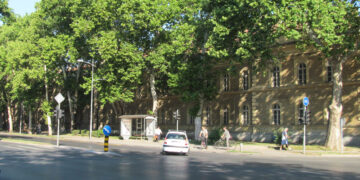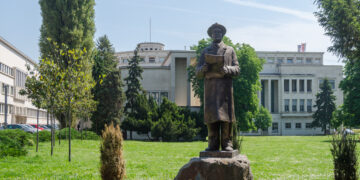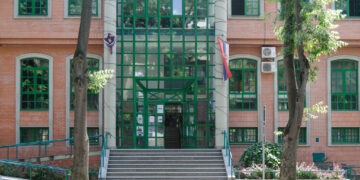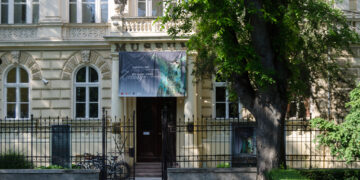Novi Sad was established after the expulsion of the Turks 1694 and it was known as Racka county town or Serbian city in Hungarian. Except Serbs, town Novi Sad was inhabited by Hungarians, Germans, Greeks and others.
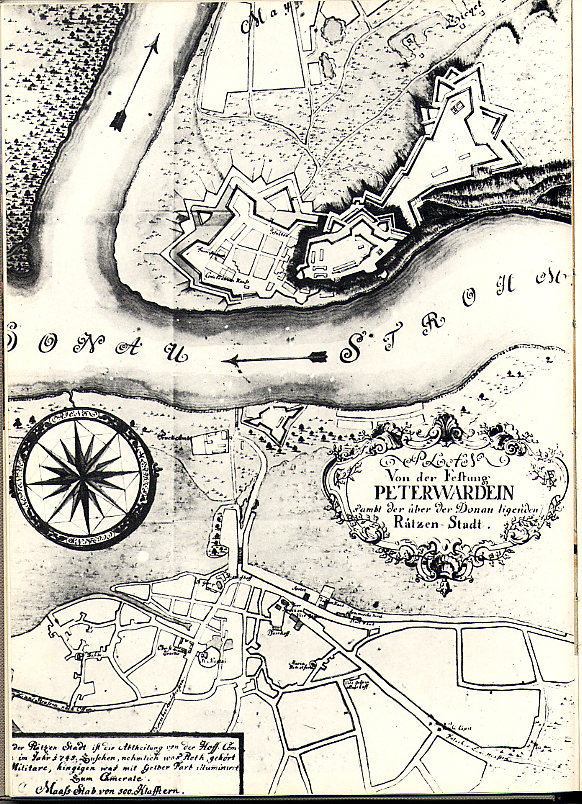
Since 1718, Novi Sad wasn’t just a border town of the Habsburg military border. It slowly develops into trade settlement where people exchange plain fruits of Backa and vineyards of the mountain Fruska gora. In the same year, the village Almas was moved with its twenty families into county town. Town was divided into military and civil part. In 1748. the most important and rich families go to Vienna and for the eight thousand rein forints bought a status of the free royal city. Then begins the period of the rapid economic development and in the middle of the 18th century, the population of Novi Sad were about eight thousand people.
Like in other free towns, town was managed by magistrate headed by judge and twelve senators. Judge and captain were elected randomly from each nation in town.
Novi Sad was demolished by huge floods in the 1771 and 1838. In beginning of the 19th century, population raised up to 20 thousand people. Novi Sad was biggest Serbian town for which Safarik said that it was “the nest of the Serbians”. It was the centre of political, cultural and social life. Some of the greatest names in Serbian history were lived in this town: Svetozar Miletic, Jovan Jovanovic Zmaj, Laza Kostic, Djordje Natosevic, Ilija Vucetic, Stefan Branovacki, Kosta Trifkovic, Arsa Pajevic etc. For all of these reasons, town was called “Serbian Athens”.
“Matica srpska” moved in Novi Sad in 1864, Serbian national theatre was formed 1861, and Serbian Gymnasium in the 1865. The holder of those initiatives was Svetozar Miletic which is remembered as his voice thundered from the City Hall and called on people. And now his monument stands on the Square, the main meeting place of Novi Sad’s residents. They are still gathered by mighty Miletic. Around the monument of Zmaj Jova run children he loved so much. He lost his owns, but he wrote for the others’ kids.
After the collapse of the Austro-Hungarian monarchy, at the initiative of Jasa Tomic, it was founded the Serbian National Council. It was organized National Guard and renewed journal “Sloboda”. The Danube division of the Serbian army was called to send units and an ultimatum to the commander of German troops to leave the city. They freed themselves the day before the entry of the Serbian army in the city. In the name of the citizens of Novi Sad, on the bridge, army was greeted by prominent citizen Sava Stojkovic who handed Serbian flag to Vojislav Bulgaria, commander of the unit that had the honor to liberate the city. 1st December was the day when Kingdom of Serbs, Croatians and Slovenians was declared, and Novi Sad became one of the most important centers in this new country. In 1929 it becomes a metropolis of the Dunavska banovina.

Municipal development in the city is perfect. It gets monumental buildings like Banovina (Government), Palace of Tunurdzic, “Radnicki Dom” etc. When formed the Independent State of Croatia (NDH), 10 April 1941, stopped the friendship treaty with the Hungarians and Miklos Horti, Hungarian admiral, sent his fascist troops to attack. On the streets appeared armed “nemzeteri” and “Volksdeutsche” to control the people.
During withdrawal, the Yugoslav army has destroyed bridge of Prince Tomislav and Railway Bridge. The attack was first performed on residents of Salajka which are mostly Serbs, which has killed about 500 people. The authorities took the military government and the Petrovaradin became part of NDH, and Novi Sad became the border town of “Great Hungary”.
In January 1942, during the “Novi Sad Raid”, 1246 residents were killed. Part of the quay was called “Quay of the raid victims” and residents of Novi Sad celebrate Commemoration dedicated to the raid victims every 22nd January. It is believed that the war killed about 5,000 people from Novi Sad. During the war the city was the seat of the district committee of the Communist Party of Yugoslavia, the Provincial Committee for Vojvodina. On 23rd October, 1945 the city was liberated by partisans from Srem and Backa when it surged through the Red Army. Since 1945, Novi Sad became the capital of the Autonomous Province of Vojvodina.
The renewal of industry formed an independent University, comprising nine faculties, some of which were first established Faculty of Philosophy and the Faculty of Agriculture. The Academy of Arts and Sciences was founded in 1980.
6 October, 1988. Demonstrations were organized under whose pressure was demolished former Vojvodina government. After spillage yogurt, revolution is called “yogurt revolution”.
The aim was to abolish the autonomous status of Vojvodina had under the Constitution of in 1974.
When Yugoslavia disintegrated, it formed the Federal Republic of Yugoslavia and the city becomes the second largest. The last decade of the 20th century marked the longest and most massive protests by opposition parties and students from December 1996 to March, 1997. From 1998 to 2000 operated the famous “Narodni Pokret Otpor”. The NATO bombing destroyed all three bridges, damaged communications, water and electrical systems, causing significant ecological pollution. Barracks and refinery facilities were bombed, Television Novi Sad on Miseluk, as well as many others.
Even though the city has received a large number of refugees, and for years after the bombing has become the largest construction site in the country, it is one of the few cities in Serbia with a positive population growth.
